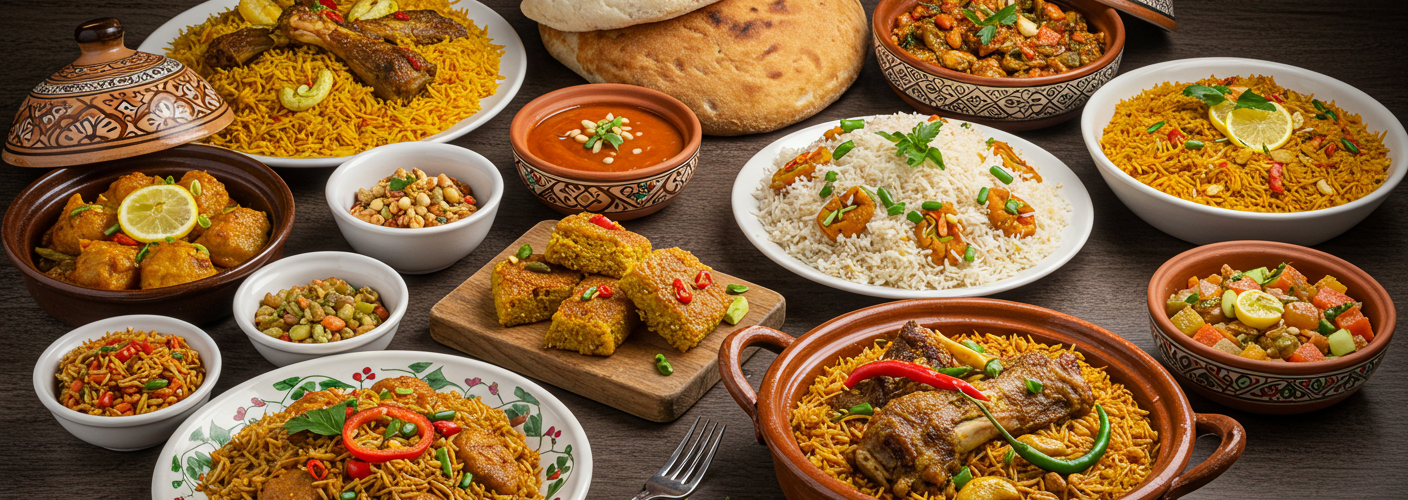When it comes to the culinary scene in the Middle East, Oman stands out with its vibrant flavors, rich traditions, and a unique blend of influences. The country’s food reflects its history, culture, and the natural resources available locally, making Omani cuisine a delightful experience for both locals and visitors. Here’s a closer look at the gastronomic treasures that all Oman food has to offer.
The Heart of Omani Cuisine: Ingredients and Culture
Oman’s diverse geography plays a significant role in shaping its culinary identity. From the coastal regions where fresh seafood is a staple to the inland areas where spices and herbs flourish, the country’s cuisine utilizes a variety of ingredients. Key components often include rice, saffron, fresh vegetables, dates, and an array of spices such as cumin, coriander, and cardamom.
Traditional Omani dishes are often a reflection of communal and family-oriented dining, highlighting the importance of sharing food. Meals are typically enjoyed together, fostering a sense of unity and hospitality, which is deeply ingrained in Omani culture.
Signature Dishes to Savor
One cannot speak of Omani cuisine without mentioning Shuwa, a traditional dish revered throughout the country. This dish consists of marinated lamb, seasoned with a blend of spices, and wrapped in banana leaves before being slow-cooked in an underground sand oven for an entire day. The result is an incredibly tender and flavorful meat that embodies the spirit of Omani cooking.
Another must-try is Majboos, a spiced rice dish that combines fragrant basmati rice with chicken or lamb and a mixture of spices. It is not only a staple at family gatherings but also often served on special occasions, showcasing the intricacy and warmth of Omani hospitality.
Harees is another beloved dish, especially during the holy month of Ramadan. Made from wheat and meat, it’s cooked to a creamy consistency and often garnished with cinnamon and sugar. The dish resonates deeply with Omani heritage, reflecting both comfort and indulgence.
For those with a sweet tooth, Omani desserts such as Halwa will undoubtedly delight. Made from a combination of ingredients like rosewater, sugar, and cardamom, this dessert is rich and aromatic. Often served with Omani coffee, it creates an experience that goes beyond mere sustenance, symbolizing the warmth of Omani hospitality.
The Social Aspect of Omani Meals
Food in Oman is not just about taste; it’s about the experience. Meals are often a social event, with families and friends gathering to share stories over delicious food. Traditional hospitality is fundamental, where guests are welcomed with open arms and offered an array of dishes.
Additionally, the influence of trade routes has brought various culinary influences to Oman, allowing the local cuisine to evolve. Dishes from India, Iran, and East Africa have been integrated, resulting in a unique fusion that characterizes various Omani specialties.
Conclusion
The culinary heritage of Oman is a feast for the senses, with its rich flavors, colorful presentations, and deeply rooted traditions. Each bite tells a story of the land, the people, and their history. Exploring all Oman food is not merely about tasting new dishes but engaging with a culture that celebrates togetherness and generosity. Whether you are sitting down to enjoy Shuwa or sharing Majboos with family, Omani cuisine offers an inviting experience that warms the heart and nourishes the soul. Embrace the flavors of Oman, and you’ll discover a world of culinary delight that is both rich and welcoming.




Add comment